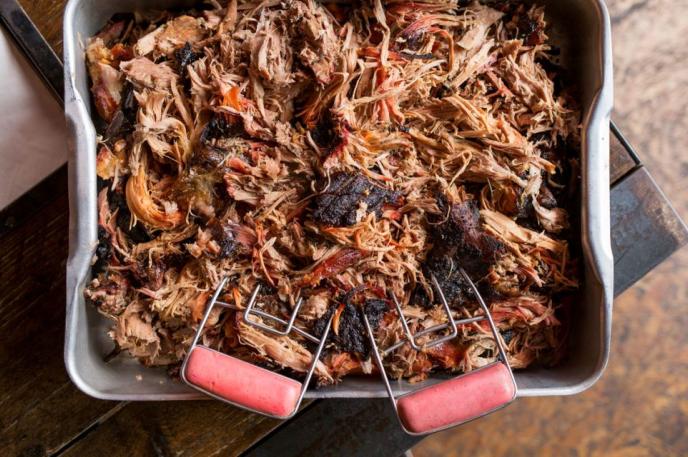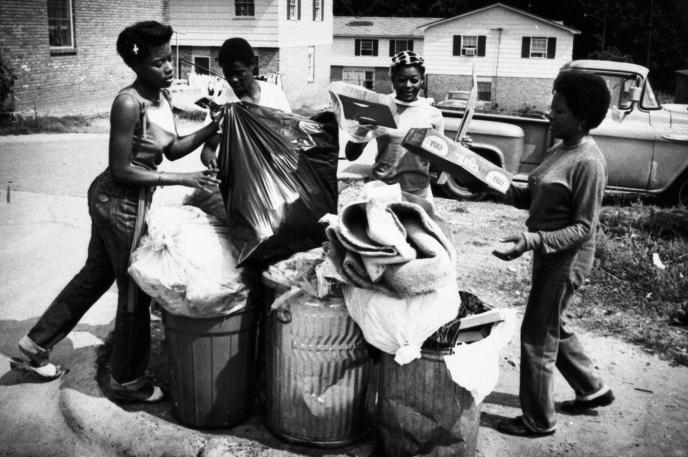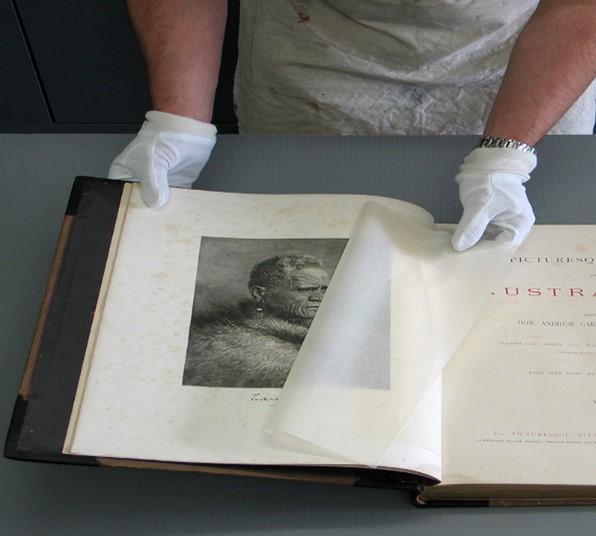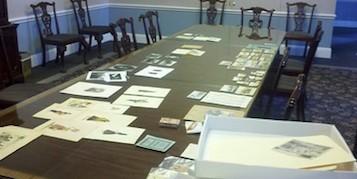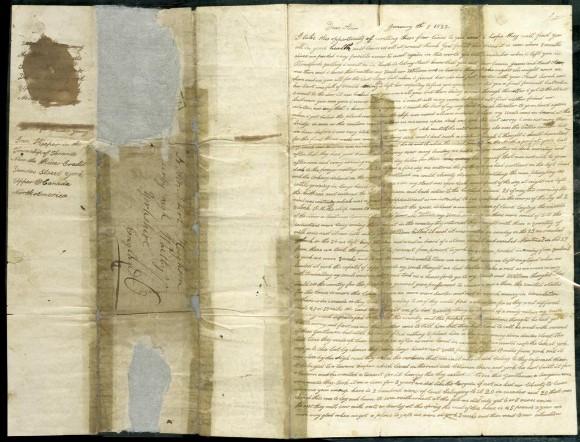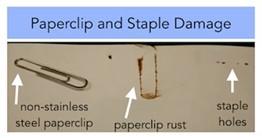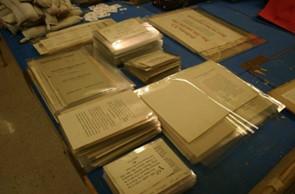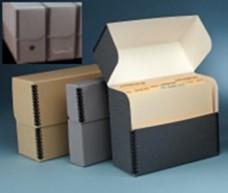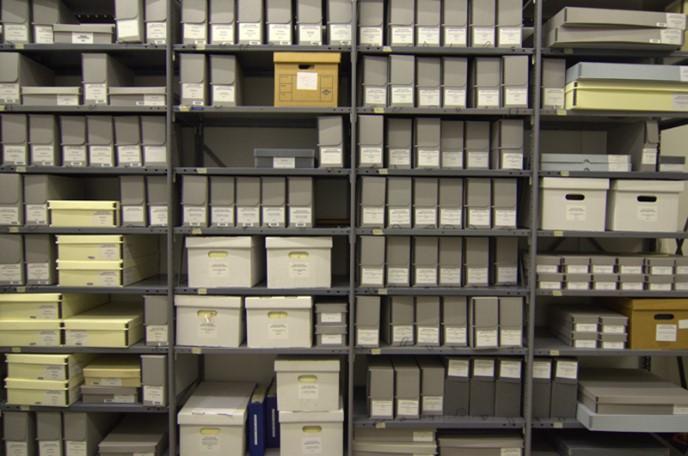*Written by Sydney Carroll of the Robinson-Spangler Carolina Room*
As a native-Virginian, I quickly learned that BBQ is the root of a lot of disagreement in the Carolinas. There are endless "rights and wrongs” to BBQ preparation, sauce, how the meat is smoked, what side dishes to serve... the list goes on.
It’s a fascinating discussion that all Carolinians, North and South, should contribute to. Read on to learn about the history of barbecue in the Carolinas and some fun facts to share at your next barbecue.
How did BBQ find its way to the Carolinas?
BBQ was “discovered” in North Carolina in the late 16th century by Sir Walter Raleigh. In 1585, Raleigh sent men to the coast of present-day North Carolina. While there, John White sketched Croatan Indians “broiling their fish over the flame—they took great heed that they bee not burnt”. What White witnessed was the Croatans using a “Barbacoa”, a framework of sticks that supported meat over a fire. Barbacoas were used by the Spanish in the Caribbean after they saw locals using the contraption to smoke their meat.
Photo courtesy of Holy Smoke: The Big Book of North Carolina Barbecue
Historians believe that German settlers who traveled via Great Wagon Road during the mid-to late-18th century from Pennsylvania influenced the style of barbecue in the North Carolina Piedmont. Catawba College history professor, Gary Freeze, developed this theory on the basis that Pennsylvania Germans barbecued the shoulder of the pig and braised it in a fruit-flavored liquid like the Lexington style North Carolinians pride themselves on today. Freeze further argues that early prominent barbecue-ers had German names (e.g., Weaver, Ridenhour, Swicegood), and that some of the Piedmont’s earliest barbecuing occurred in German cotton mill villages.
North Carolina: Home to the “Original” BBQ Recipe
According to Holy Smoke: The Big Book of North Carolina Barbecue, BBQ in North Carolina must meet these three qualifications:
-
The meat must be barbecued, meaning cooked at a low temperature for a long time with heat and smoke flavoring the meat from a fire of hardwood and/or hardwood coals.
-
The meat must be pork (whole hog, shoulder, or occasionally ham).
-
The meat is always served with a thin vinegar-based sauce.
Photo courtesy of Chairgatin
There are two main styles of BBQ in North Carolina—Eastern and Lexington (“Piedmont”). Eastern-style BBQ uses the whole-hog (“every part of the hog but the squeal”) with a lemon juice or vinegar, pepper-based sauce. Eastern style incorporates zero tomatoes in its recipe. Food critics are careful to say it is the “truest” form of BBQ, but many refer to Eastern Style as the “original” recipe [Our State article].
Piedmont-style became popular in the WWI era and uses meat from the pork shoulder with vinegar, ketchup, and spice-based sauce. Five men of German descent are credited with the adaptation of the Eastern-style recipe.
Sauce is another point of contention in North Carolina. The ingredients for the standard NC BBQ sauce vary from family to family, but the “official” recipe is along the lines of this description found in Martha McCulloch-Williams' recollections:
“Two pounds of sweet lard, melted in a brass kettle, with one pound beaten, not ground, pepper a pint of small fiery red peppers, nubbed and stewed soft in water to barely cover, a spoonful of herbs in powder- he would never tell what they were [of course!], -- and a quart and pint of the strongest apple vinegar, with a little salt.” - Holy Smoke: The Big Book of North Carolina Barbecue
South Carolina: Home to the Four Sauces
South Carolina also believes that barbecue was “founded” in the Palmetto State, so I guess we will never truly know which Carolina BBQ calls home. We do know that South Carolina features all four sauces throughout the state, a trait they pride themselves on.
Photo courtesy of Discover South Carolina
1) Mustard: Found throughout the midland part of the state down toward the lower coastline. Distinct tasting sauce traced back to German settlers.
2) Heavy Tomato: Found in the western and northwestern part of the state. Popularly known and sold in grocery stores (Kraft, Sweet Baby Rays, etc.)
3) Light Tomato: Found in the Pee Dee and upper part of the state. A light mix of the vinegar/pepper sauce with ketchup or tomato added.
4) Vinegar + Pepper: Found along the coast. Spicy vinegar and pepper sauce.
Photo courtesy of Charleston City Paper.
So, what’s up with the tomatoes, and why is there so much controversy around adding them to BBQ sauce? South Carolina farmers began growing “love apples” in the 18th century and food historians believe that German settlers began to add ketchup to the Eastern-style BBQ. The addition of the sugary ketchup made the BBQ recipes closer to the sweet-sour taste that is common in German cooking.
The only thing both Carolinas agree on? The meat must be smoked.
“You can put barbecue sauce on it and call it barbecue. You can cook it in a Crock-Pot and put sauce on it and call it barbecue. But it’s not. Now, I get chastised on that all the time—about being old-school and a purist and all that. All I’m saying is, there’s a totally different flavor when you’ve got the fat of that meat dripping onto live coals. The smoke it creates to season that pig—that makes the difference.” -Jim Early, Charlotte Magazine
We know that Carolinians eat BBQ, but how do we celebrate the dish?
Photo courtesy of Lexington Barbecue Festival, 2019.
The Carolinas celebrate BBQ big time. Lexington, North Carolina throws a huge BBQ Festival every October. Lexington felt so strongly about hosting the official BBQ festival that they even submitted a House Bill to the General Assembly in 2005. Two days later, the bill was approved and the Lexington Barbecue Festival was adopted as the state’s official BBQ festival. South Carolina also celebrates BBQ with a variety of festivals.
If you want to decide if North Carolina or South Carolina BBQ is supreme, take a long drive along the Historic BBQ trails. You can always use the Carolina Room’s cookbooks to find mouthwatering BBQ recipes to try at home, too!
References
Garner, Bob. “Bob Garner’s Book of Barbecue: North Carolina’s Favorite Food.” Winston-Salem, NC: John F. Blair, 2012.
Garner, Bob. “North Carolina Barbecue: Flavored by time.” Winston-Salem, NC: John F. Blair, 1996.
Lacour, Greg. “What’s Our Barbecue Story?” Charlotte Magazine. June 2019. Accessed August 2019. http://www.charlottemagazine.com/Charlotte-Magazine/June-2019/Our-Barbecue-Story/
Quine, Katie. “Why Are There Two Styles of NC Barbecue?” Our State. May 2015. Accessed August 2019. https://www.ourstate.com/nc-barbecue-styles/
Reed, John Shelton. “Holy Smoke: The Big Book of North Carolina Barbecue.” The University of North Carolina Press, 2008.
"South Carolina Barbecue.” Discover South Carolina. https://discoversouthcarolina.com/barbecue

